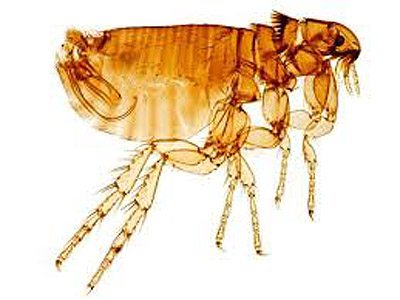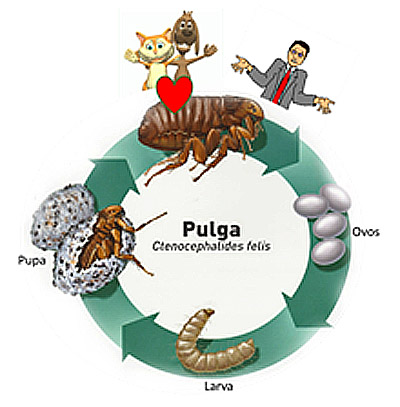 Have you ever been on vacation and had fleas at home? And you even think, but how is it possible if my dog or cat were elsewhere?
Have you ever been on vacation and had fleas at home? And you even think, but how is it possible if my dog or cat were elsewhere?
The dog and cat flea (Ctenocephalides felis) have some very curious characteristics. From the outset, it prefers to feed on the blood of these animals than bite people. They grow indoors throughout the year and we only see adult fleas that make up 10% of the total population.
Each female releases, for a week, 50 eggs per day that fall on rugs, blankets, sofas, etc. These eggs go through intermediate stages of development, larvae and pupae. The larvae live in the domestic environment and feed on flea droppings, small pieces of human and animal skin and other organic materials found on sofas, rugs, etc.
Like a butterfly in a cocoon, the adult flea develops in the pupa and can stay there for a long time. The exit to the environment happens when it feels a vibration or movement and, therefore, “feels” that there is an animal nearby. Then it jumps onto the skin to sting and get a blood meal.
When animals are at home, fleas develop continuously, prefer the dog or cat, and people don't even notice.
But what about returning from vacation? What was the point of opening the door at home and these annoying parasites jumping out at us?
 When a house is empty, that is, without movement, all fleas are retained in the pupae stage, waiting for a movement to exit. This movement can simply be the door to the house opening. At the same time, fleas jump, but with no animal preference, and so parasitize dogs, cats and humans.
When a house is empty, that is, without movement, all fleas are retained in the pupae stage, waiting for a movement to exit. This movement can simply be the door to the house opening. At the same time, fleas jump, but with no animal preference, and so parasitize dogs, cats and humans.
Final notes:
– If you have animals at home, keep them free of fleas with products that eliminate all stages of larval development that are most commonly known by pipettes.
– Reduce the amount of rugs.
– Wash clothes and places where animals rest weekly.
– If you see fleas in the house or on animals, consult a veterinarian.
Ana Calado, Veterinary Doctor
Science in the Regional Press – Ciência Viva
Figure 1 – Ctenocephalides felis
Figure 2 – Dog and cat flea life cycle

















Comments